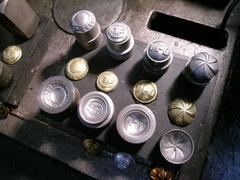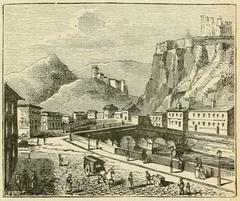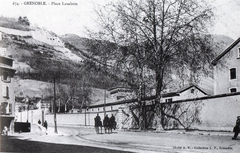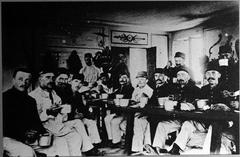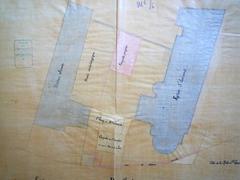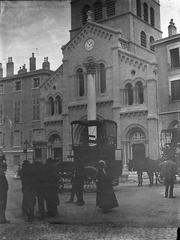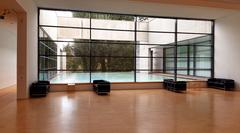
Cularo Ancient Grenoble Visiting Hours, Tickets, and Historical Sites Guide
Date: 03/07/2025
Introduction to Cularo: Ancient Grenoble’s Legacy
At the foot of the French Alps, Grenoble is a city where ancient and modern histories intertwine. Its roots trace back to Cularo, a Gallic settlement founded by the Allobroges in the 1st century BCE. Elevated to a Roman city in the late 3rd century CE, Cularo was fortified, expanded, and eventually transformed into Gratianopolis—today’s Grenoble. For visitors, the city’s layered past is revealed through Roman walls, early Christian sites, medieval streets, and panoramic fortresses, offering a journey across two millennia of continuous habitation.
This guide delivers an in-depth overview of Cularo’s historical sites—including essential information on visiting hours, tickets, accessibility, tours, and local experiences—so you can plan and enjoy a rewarding exploration of Grenoble’s heritage. For up-to-date details and interactive maps, consult the official tourism resources and digital guides such as the Audiala app (Grenoble Tourisme, Audiala App).
Table of Contents
- Introduction to Cularo: Ancient Grenoble’s Legacy
- Key Sites and Monuments
- Practical Visitor Information
- FAQ
- Additional Nearby Sites & Day Trips
- Conclusion & Resources
Key Sites and Monuments in Grenoble
Gallo-Roman Walls of Cularo
Constructed in the late 3rd century CE under Emperor Maximian, the Gallo-Roman walls are among Grenoble’s most tangible links to its ancient past. These ramparts, stretching over a kilometer and punctuated by 38 towers, once defined the city’s limits and protected its inhabitants.
-
Where to See:
- Rue Lafayette: Best-preserved segments, often integrated into modern buildings.
- Place Notre-Dame & Rue Chenoise: Additional fragments incorporated into the urban landscape.
- Musée de l’Ancien Évêché: Interior displays with interpretive panels and reconstructions (archaeolist.com, Vamados).
-
Visiting Hours & Tickets:
- Outdoor wall remains: Accessible year-round, free.
- Musée de l’Ancien Évêché: Tues–Sun, 10:00–18:00, free entry (Musée de l’Ancien Évêché).
-
Guided Tours:
- The Grenoble Tourist Office offers Roman heritage tours; booking ahead is recommended (Grenoble Tourisme).
Saint-Laurent Archaeological Museum & Crypt
This museum is built atop a significant Gallo-Roman necropolis and preserves the early Christian crypt of Saint-Laurent (5th–6th century). Notable for its atmospheric lighting and archaeological displays, the site is one of Europe’s best-preserved early Christian monuments (Offbeat France).
- Hours: Daily 10:00–18:00 (closed Mondays)
- Tickets: €5 standard; reduced rates for students/seniors; free for children under 18
- Accessibility: Wheelchair accessible
- Highlights: Necropolis tombs, early medieval artifacts, interactive exhibits
Early Christian Baptistery
Adjacent to the cathedral, Grenoble’s baptistery is one of France’s oldest, dating to the 4th–6th centuries. Its octagonal design and ancient baptismal pool offer insight into early Christian practices (archaeolist.com). Access is via the Musée de l’Ancien Évêché.
Vieille Ville (Old Town) and Place Grenette
Grenoble’s Old Town overlays much of ancient Cularo. Medieval streets and squares such as Place Grenette (once a Roman forum) evoke the city’s continuous development (PlanetWare). Informative plaques and guided walks are available (Nomads Travel Guide).
Musée de l’Ancien Évêché
Located in the former bishop’s palace, this museum narrates Grenoble’s history from Roman times to the present with permanent exhibitions, digital reconstructions, and access to a section of the Roman wall (archaeolist.com).
- Hours: Tues–Sun, 10:00–18:00
- Tickets: Free
Bastille Fortress
Perched above Grenoble, the Bastille Fortress dates from the 17th century, though the site’s fortifications began in antiquity. It provides panoramic Alpine views and houses interactive exhibits about the city’s military history (Grenoble Tourisme).
- Cable Car Hours: 9:30–19:00 (seasonal variations)
- Fort Entry: 9:30–18:00, free (cable car ticket: €6.50–€7 round-trip)
- Accessibility: Cable car is wheelchair accessible; some areas have uneven terrain (Official Bastille website)
Jardin de Ville and Public Parks
These historic parks overlay ancient sites and offer pleasant settings for relaxation. Jardin de Ville features sculptures and visible Roman wall remnants (Try Travel). Open year-round, free entry.
Grenoble Cathedral & Place Notre-Dame
Grenoble Cathedral stands on Roman foundations and is a key spiritual and architectural landmark. The adjacent Place Notre-Dame juxtaposes Roman, medieval, and modern elements (PlanetWare). Cathedral hours vary; check for mass and tour times.
Practical Visitor Information
Accessibility
Most historic sites are centrally located and accessible by foot, tram, or bus. The main museums, cable car, and public parks are wheelchair accessible, though some areas of the old town and ramparts have cobblestones or uneven surfaces (Nomads Travel Guide).
Guided Tours
Book walking tours focused on Roman and medieval heritage through the Grenoble Tourist Office. Tours are offered in English and French, especially during peak seasons (Grenoble Tourisme).
Tickets and Passes
- Outdoor sites (Roman walls, Bastille grounds): Free
- Museums: €5–€8 standard; discounts often available
- City museum pass: Offers savings for multiple sites
- Cable car to Bastille: ~€6.50–€7 round-trip
Best Times to Visit
Spring and early autumn offer mild weather and fewer crowds, while summer features festivals and outdoor events (Kimkim: France in July).
Photography
Roman walls, crypts, and panoramic views are especially photogenic. Observe photography rules in museums and religious sites.
Frequently Asked Questions (FAQ)
Q: Are the Roman walls free to visit?
A: Yes, all publicly accessible wall segments are free; Musée de l’Ancien Évêché is also free.
Q: Are English-language tours available?
A: Yes, via the tourist office, especially during the tourist season.
Q: How do I reach the Bastille Fortress?
A: By cable car (ticket required) or by hiking from the city center.
Q: Is the historic center wheelchair accessible?
A: Most key sites are accessible, though some old town streets may be challenging.
Q: Where can I get maps and book tours?
A: At the Grenoble Tourist Office (14 Rue de la République) or online (Grenoble Tourisme).
Additional Noteworthy Sites & Day Trips
- Muséum d’Histoire Naturelle: Natural history collections (The Crazy Tourist).
- Place Saint-André: Historic square with Roman roots (Offbeat France).
- Nearby Excursions: Chartreuse and Vercors mountains, Domaine de Vizille (Grenoble Tourisme).
Conclusion: Plan Your Journey to Cularo and Grenoble
Grenoble invites you to walk through living history—from Cularo’s Roman ramparts and early Christian crypts to scenic fortresses and lively squares. The city’s blend of ancient heritage, cultural festivals, and Alpine scenery ensures a rich and memorable visit.
For updated opening hours, tickets, events, and digital resources, always check the official tourism website. Download the Audiala app for interactive guides and follow local channels for current news. Start your journey today and uncover the layers of Grenoble’s fascinating past!
References and Useful Links
- Grenoble Tourism: Historical Sites and Information
- Cularo Visiting Guide - Archaeolist
- Offbeat France: Grenoble History
- Musée de l’Ancien Évêché
- Official Bastille Website
- Musée de Grenoble
- PlanetWare - Grenoble Travel Guide
- Try Travel - Things to Do in Grenoble
- Kimkim: France in July - Travel Tips
- Nomads Travel Guide - Grenoble
- The Crazy Tourist - Best Things to Do in Grenoble

